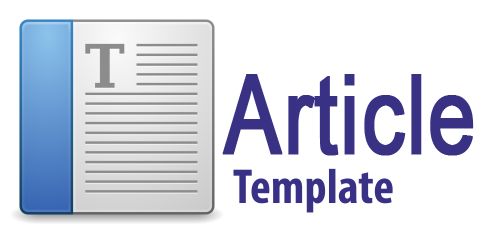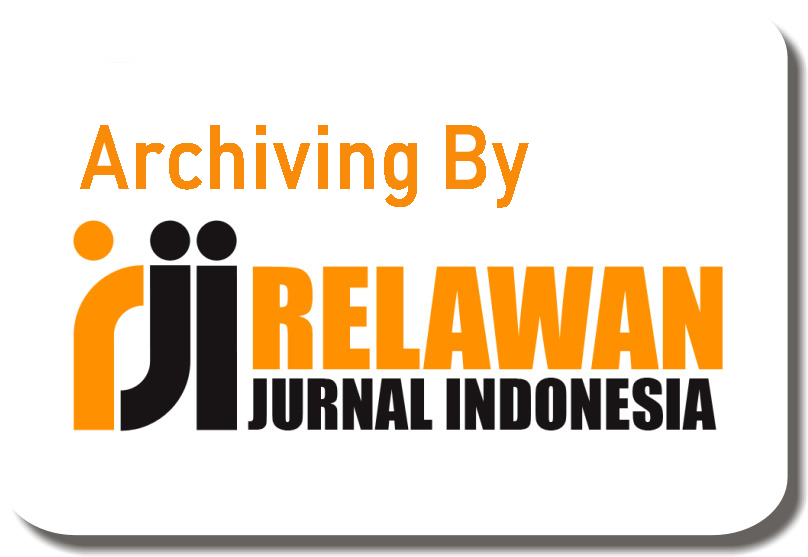Blended Learning as a Catalyst: A Mixed-Method Study on Its Influence on Student Engagement and English Comprehension in a Batam Vocational School
Abstract
Blended learning, integrating traditional face-to-face instruction with online components, is increasingly recognized for its potential to transform English Language Teaching (ELT) by offering flexibility and enhancing engagement. This study aimed to investigate the impact of blended learning on students' engagement and English reading comprehension within a vocational high school in Batam. Employing a mixed-methods sequential explanatory design, quantitative data from pre-tests, post-tests, and questionnaires were collected from 80 second-grade students, supplemented by qualitative insights from semi-structured interviews with six students. Results indicated that blended learning significantly improved students' English reading comprehension, with the experimental group showing a substantial increase in scores compared to the control group. Student engagement levels were generally moderate to high, particularly in behavioural and technological aspects (students’ comfort and interaction with the digital platform and tools used for learning, including their ease of use and the perceived effectiveness of online materials), though emotional and cognitive engagement variations were observed. Qualitative findings elucidated these nuances, revealing how confidence and preference for direct instruction influenced engagement. The study underscores blended learning's robust potential to enhance academic achievement and engagement, even with mixed engagement profiles. These findings provide strong empirical evidence for integrating well-structured blended learning in vocational ELT, bridging classroom learning with workplace demands and preparing students for global career challenges.
Keywords
Full Text:
PDFReferences
Adhikari, R., & Timsina, T. P. (2024). An educational study focused on the application of mixed method approach as a research method. OCEM Journal of Management, Technology & Social Sciences, 3(1), 94–109. https://doi.org/10.3126/ocemjmtss.v3i1.62229
Albatti, H. (2023). Blended learning in English language teaching and learning: A focused study on a reading and vocabulary building course. World Journal of English Language, 13(5), 121–130. https://doi.org/10.5430/wjel.v13n5p121
Allendoerfer, M. G. (2022). Supporting Student Learning Through Flexibility and Transparency. In A. A. Szarejko (Ed.), Pandemic Pedagogy: Teaching International Relations Amid COVID-19 (pp. 127–140). Springer International Publishing. https://doi.org/10.1007/978-3-030-83557-6_8
Al-Mamoori, M. J. O., & Hosseinpur, D. R. M. (2024). The effect of using blended learning on Iraqi EFL students’ reading achievement. Journal of Language and Linguistics in Society, 4(01), 1–12. https://doi.org/10.55529/jlls.41.1.12
Arumita, P. (2023). Analysis of Cross-Cultural Communication Using the DEMATEL Method. Contemporaneity of Language and Literature in the Robotized Millennium, 5(1), 16–27. https://doi.org/10.46632/cllrm/5/1/3
Ashford, R. (2024). The Role of Interactive Reading Strategies in Enhancing Reading Comprehension of Lower Primary Students. Research and Advances in Education, 3(12), 46–53.
Barahona, A. C., Marqués Molías, L., Samaniego Erazo, G., Mejía-Granizo, C., Rosas-Chávez, P., & Avalos-Espinoza, P. (2024). Mixed method research approach: Defining and enhancing the level of digital competence development of university faculty. In M. Botto-Tobar, M. Zambrano Vizuete, S. Montes León, P. Torres-Carrión, & B. Durakovic (Eds.), International Conference on Applied Technologies (pp. 91–101). Springer Nature Switzerland. https://doi.org/10.1007/978-3-031-58950-8_8
Blyznyuk, T., & Kachak, T. (2024). Benefits of Interactive Learning for Students’ Critical Thinking Skills Improvement. Journal of Vasyl Stefanyk Precarpathian National University, 11(1), 94–102. https://doi.org/10.15330/jpnu.11.1.94-102
Budiyanto, Kabri, K., Harapan, E., & Purwanto, M. B. (2024). 21st Century English Learning: A revolution in skills, critical thinking, creativity, and visual communication. Asian Journal of Applied Education (AJAE), 3(1), 43–54. https://doi.org/10.55927/ajae.v3i1.7841
Calicdan, T. N. P., & Gementiza-Cubio, L. (2025). Student Engagement in Learning Algebra—A Mixed Method Study. EPRA International Journal of Multidisciplinary Research (IJMR), 11(1), 858–872.
Creswell, J. W., & Creswell, J. D. (2018). Research Design: Qualitative, Quantitative, and Mixed Methods Approaches (5th ed.). SAGE Publications, Inc.
Devos, N. J. (2023). Reading for the Technical Workplace: Developing a Diagnostic Reading Assessment for Understanding Instructional Texts. TESL Canada Journal, 40(2), 41–61. https://doi.org/10.18806/tesl.v40i2/1393
Duan, L. (2024). Moderated Mediation Model of Student Expectation and Satisfaction in Blended Learning: Context of mathematics learning in Chinese higher education institutions. Journal of Electrical Systems, 20(6s), 897–913. https://doi.org/10.52783/jes.2769
Effendi, T. S., & Wijirahayu, S. (2024). The Vocational High School Students’ Perceptions of Collaborative Learning in Reading. Journal of English Teaching, Literature, and Applied Linguistics, 8(2), 162–184. https://doi.org/10.30587/jetlal.v8i2.8001
Eralita, N., & Azzizzah, F. A. (2023). Blended learning’s effect toward learning achievement post Covid 19 pandemic. International Journal of Chemistry Education Research, 1–5. https://doi.org/10.20885/ijcer.vol7.iss1.art1
Eslit, E. R. (2023). Striking the Balance: An in-depth examination of the blended learning challenges for students, teachers, and parents (2023070779). Preprints. https://doi.org/10.20944/preprints202307.0779.v1
Fadila, A. D. (2023). Students’ perception on English blended learning during new normal era at Senior High School 1 Harau. UIN Sultan Syarif Kasim, Riau, Pekan Baru.
Fehaima, A. (2023). The effect of blended learning model in improving English foreign language learning students’ achievement. Global Journal of Foreign Language Teaching, 13(2), 118–126. https://doi.org/10.18844/gjflt.v13i2.8331
Fionasari, R. (2024). Blended Learning Environments: A systematic review of effective strategies in educational settings. International Journal of Multidisciplinary Approach Sciences and Technologies, 1(2), 120–132. https://doi.org/10.62207/gn00ce77
Gao, J., & Tan, Y. (2024). The Construction of a Blended English Teaching Model for Vocational Education Based on Mobile-Assisted Language Learning (MALL). Education Reform and Development, 6(12), Article 12. https://doi.org/10.26689/erd.v6i12.9249
Haslina, H., & Hamamah, H. (2023, June 9). Teaching English as foreign language for young learners in South Sulawesi remote area. Proceedings of the 2nd International Conference on Language, Literature, Education, and Culture, ICOLLEC 2022, 11–12 November 2022, Malang, Indonesia. https://eudl.eu/doi/10.4108/eai.11-11-2022.2329409
Hernandez-Gantes, V. M. (2022). Vocational to Career and Technical Education. https://doi.org/10.4324/9781138609877-REE76-1
Hong, H. (2024). Effective Blended Learning Instructional Design Strategies in Medical Education. Journal of Medicine and Life Science, 21(3), 53–61. https://doi.org/10.22730/jmls.2024.21.3.53
Hou, Y. (2024). Effects of Student Choice on Intrinsic Motivation and Language Proficiency in High School L2 Education. Communications in Humanities Research, 46, 117–122. https://doi.org/10.54254/2753-7064/46/20242276
Idowu, E. (2024). Personalized Learning: Tailoring instruction to individual student needs. Preprints. https://doi.org/10.20944/preprints202411.0863.v1
Ismawati, D., Haryanto, B., & Fahyuni, E. F. (2022). Blended learning in elementary schools. KnE Social Sciences, 318–329. https://doi.org/10.18502/kss.v7i10.11234
Kalita, B. (2024). The Role of Vocational Education on the Development of Youth. ShodhKosh: Journal of Visual and Performing Arts, 5(1), 1206–1211. https://doi.org/10.29121/shodhkosh.v5.i1.2024.3018
Kayaduman, H., Battal, A., & Polat, H. (2023). The Relationship between Undergraduate Students’ Digital Literacy and Self-Regulation in Online Interaction. Innovations in Education and Teaching International, 60(6), 894–905. https://doi.org/10.1080/14703297.2022.2113113
Konstantinidou, L., Madlener-Charpentier, K., Opacic, A., Gautschi, C., & Hoefele, J. (2023). Literacy in Vocational Education and Training: Scenario-based reading and writing education. Reading and Writing, 36(4), 1025–1052. https://doi.org/10.1007/s11145-022-10373-4
Kurniawan, R., Bakar, M. Y. A., & Fuad, A. Z. (2023). Blended literacy: Post-pandemic literacy strategies at integrated Madrasah Tsanawiyah. Indonesian Journal of Islamic Education Studies (IJIES), 6(1), 64–78. https://doi.org/10.33367/ijies.v6i1.3326
Lan, P. T., & Minh, N. T. H. (2023). Using blended learning in improving reading comprehension skills for secondary students. European Modern Studies Journal, 7, 183–189. https://doi.org/10.59573/emsj.7(3).2023.18
Li, X., Liu, Q., Xie, K., Chang, Y., Shi, Y., & Ma, J. (2025). Understanding Interpersonal Interaction Characteristics in a Blended Synchronous Classroom: A multimodal discourse analytic perspective. Asia Pacific Journal of Education, 45(3), 725–748. https://doi.org/10.1080/02188791.2023.2206550
Liu, J. (2024). Responsiveness of the Curriculum to the Career Path of Art Design Majors in Vocational Schools. International Journal of Education and Humanities, 15(3), 290–295. https://doi.org/10.54097/5vnqe847
Ma, D. (2023). Research based on key competences on English teaching in vocational schools. English Language Teaching and Linguistics Studies, 5(1), 1–5. https://doi.org/10.22158/eltls.v5n1p1
Manolescu, D. (2023). A quick snapshot of the English language. Journal of Critical Studies in Language and Literature, 4(1), 14–20. https://doi.org/10.46809/jcsll.v4i1.191
Mavluda, K. (2024). Innovative Teaching Methods for Developing Creative Competencies in Vocational Education Students. International Journal of Pedagogics, 4(12), 219–223. https://doi.org/10.37547/ijp/Volume04Issue12-46
Mbaka, P. K. (2021). Flexible and Blended Learning during COVID-19 Pandemic: New Norm in Teaching and Learning. Journal of Education and Practice, 12(15), 40–43.
Nathan, J., Mogare, J., Singh, P., & Gagare, K. (2025). 3TW Model for Enhancement of Teaching and Learning Experiences in the Digital Era. Digital Crossroads: Integrating Humanities, Science and Technology Edition 1, 236–245. https://doi.org/10.9734/bpi/mono/978-93-48859-10-5/CH22
Nazeef, N. M., Hamid, S., & Ahmed, S. (2024). Investigating Factors Influencing Learning Satisfaction in Blended Learning Environments: A PLS-SEM approach. Journal of Asian Development Studies, 13(2), 726–738. https://doi.org/10.62345/jads.2024.13.2.58
Nurlaily, S. (2021). The role of English as global language. https://doi.org/10.33387/J.EDU.V19I1.3200
Pohan, A. E., Harahap, D. A., Hasibuan, J. R., Ghani, M. F. A., Alsamiri, Y. A., Beni, R., Sari, H., & Ashari, E. (2025). Updating Vocational English Textbooks to Meet Industrial Demands in Indonesia. Journal of Languages and Language Teaching, 13(1), 32–45. https://doi.org/10.33394/jollt.v13i1.13194
Pulgar, J., Ramírez, D., & Candia, C. (2023). Enhanced Social Connectivity in Hybrid Classrooms Versus Academic Centrality in Online Settings. Physical Review Physics Education Research, 19(2). https://doi.org/10.1103/PhysRevPhysEducRes.19.020155
Randall, J. G., Hanson, M. D., & Nassrelgrgawi, A. S. (2022). Staying Focused when Nobody is Watching: Self-regulatory strategies to reduce mind wandering during self-directed learning. Applied Psychology, 71(4), 1428–1464. https://doi.org/10.1111/apps.12366
Rosalita, V. (2022). The effect of the blended learning implementation on students’ learning achievement in reading skills. UIN Fatmawati Sukarno Bengkulu.
Rozi, N. F. (2023). English language teaching in Indonesia: Monolingual and multilingual practices. K@ta, 25, 88–95. https://doi.org/10.9744/kata.25.00.88-95
Ruzhanska, V. O., Pashkova, Y. P., Palahniuk, G. O., Sursaieva, L. M., & Matohniuk, M. O. (2024). Blended learning in the system of professional training of students at higher medical educational institutions. The Medical and Ecological Problems, 28(1), 65–70. https://doi.org/10.31718/mep.2024.28.1.09
Sawan, N., Al-Hajaya, K., Salem, R. I. A., & Alshhadat, M. (2024). Pre-COVID-19 student perceptions on blended learning and flipped classroom in accountancy: A case study from two emerging UK HEIs. Emerald Insight, 16(2), 597–609. https://doi.org/10.1108/JARHE-01-2023-0002
Serwornoo, M. Y. W., Danso, S., Azanu, B., Semarco, S. K. M., & Aidoo, E. A. K. (2024). Use of Digital Platforms Among University Students: A systematic literature review. Qeios. https://doi.org/10.32388/SQKGT5.2
Setyowati, L., Ahmad, D. N., & Alfahnum, M. (2023). The implementation of English curriculum at SDN Jatimulya 11 Bekasi. Research and Development Journal of Education, 9(1), 377–385. https://doi.org/10.30998/rdje.v9i1.15539
Srinivasa, K. G., Kurni, M., & Saritha, K. (2022). Adaptive Teaching/Learning. In K. G. Srinivasa, M. Kurni, & K. Saritha (Eds.), Learning, Teaching, and Assessment Methods for Contemporary Learners: Pedagogy for the Digital Generation (pp. 201–240). Springer Nature. https://doi.org/10.1007/978-981-19-6734-4_9
Sudarmiati, E. W., & Prasida, H. (2020). Preserving English learning for Senior High School and Vocational High School students in online learning: Teaching strategy. Universitas Negeri Malang.
Suharjati, F. (2020). History of teaching English as a foreign language in Indonesia. Deiksis, 2(03), 161–168. https://doi.org/10.30998/deiksis.v2i03.401
Toyon, M. A. S. (2021). Explanatory sequential design of mixed methods research: Phases and challenges. International Journal of Research in Business and Social Science, 10(5), 253–260. https://doi.org/10.20525/ijrbs.v10i5.1262
Tsegaye, D., & Belihu, G. G. (2024). The effects of blended learning on university students’ reading comprehension. ELT Forum: Journal of English Language Teaching, 13(2), 163–173. https://doi.org/10.15294/elt.v13i2.3432
Verma, R. K., Gupta, S., & Illinich, S. (2024). Technology-Enhanced Personalized Learning in Higher Education. In Advances in Technological Innovations in Higher Education (1st ed., p. 22). CRC Press.
Wang, C. (2022). Comprehensively Summarizing What Distracts Students from Online Learning: A literature review. Human Behavior and Emerging Technologies, 2022(1). https://doi.org/10.1155/2022/1483531
Wei, Z. (2024). Navigating Digital Learning Landscapes: Unveiling the interplay between learning behaviors, digital literacy, and educational outcomes. Journal of the Knowledge Economy, 15(3), 10516–10546. https://doi.org/10.1007/s13132-023-01522-3
Yuanyuan, F., & Nagappan, R. (2025). Bibliometrics and visual analysis: Trends in instructional design in a blended learning environment in the post-pandemic era. International Journal of Teaching, Learning and Education (IJTLE), 4(1). https://ijtle.com/issue-alldetail/bibliometrics-and-visual-analysis-trends-in-instructional-design-in-a-blended-learning-environment-in-the-post-pandemic-era
Zhang, H. (2024). The Impact of English Language Development on Internationalization of Education. Lecture Notes in Education Psychology and Public Media, 34, 243–249. https://doi.org/10.54254/2753-7048/34/20231933
Zhu, X., Shui, H., & Chen, B. (2023). Beyond Reading Together: Facilitating knowledge construction through participation roles and social annotation in college classrooms. The Internet and Higher Education, 59, 100919. https://doi.org/10.1016/j.iheduc.2023.100919
DOI: https://doi.org/10.31004/jele.v10i5.1300
Refbacks
- There are currently no refbacks.
Copyright (c) 2025 M. Rabiddin Hussien, Udi Samanhudi, Bachtiar

This work is licensed under a Creative Commons Attribution-ShareAlike 4.0 International License.



